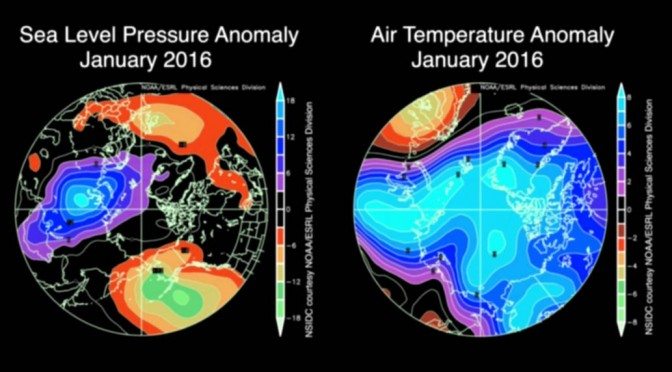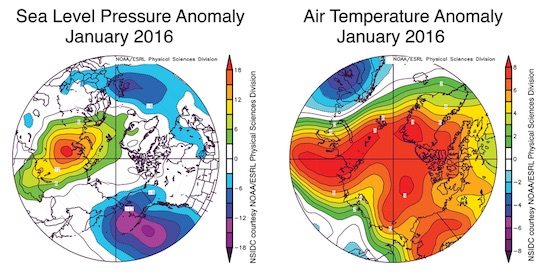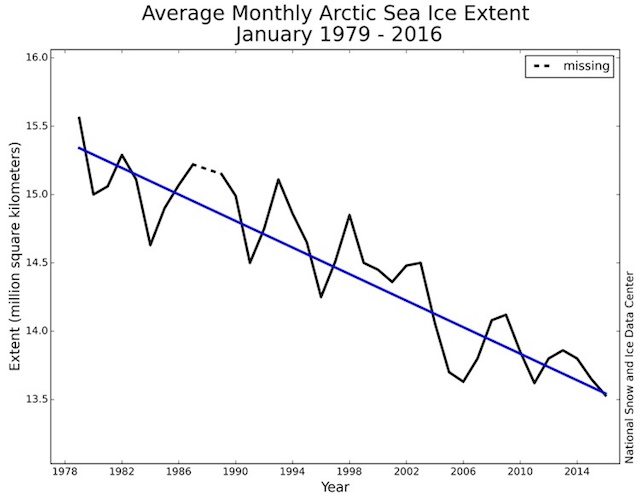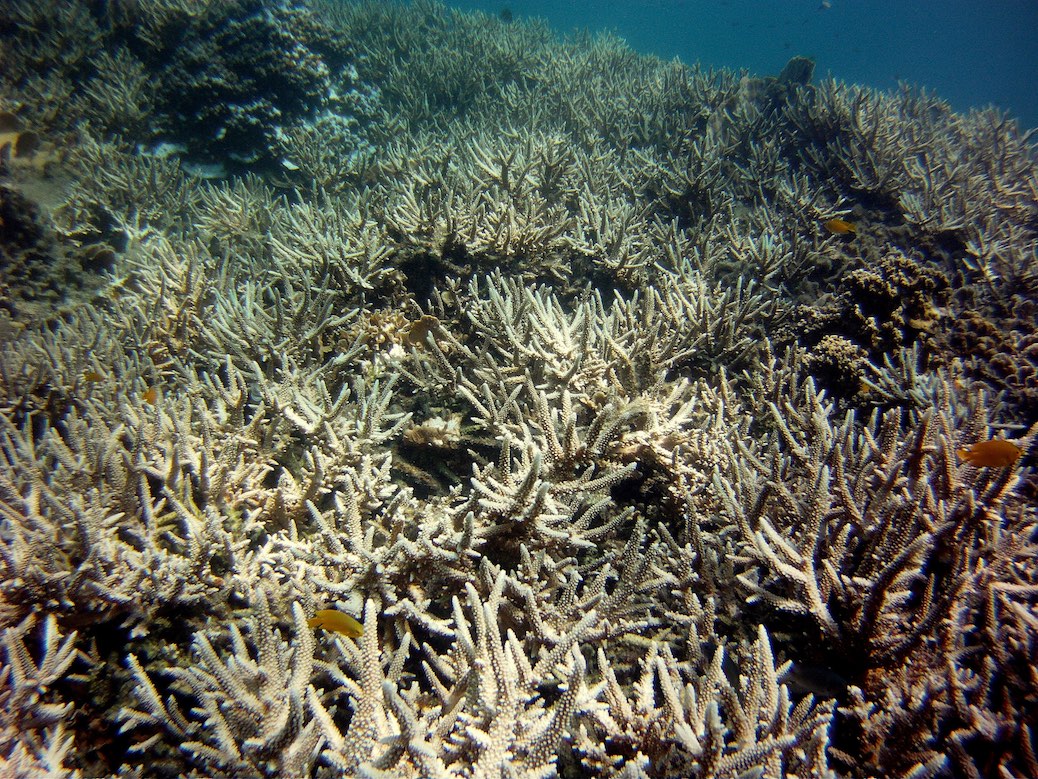
Arctic Sea Ice at Record Low for January
- Arctic, Climate, News
- arctic, climate change, Featured, sea ice extent
- February 9, 2016
An unusually warm January over the Arctic ocean combined with a strong negative phase of the Arctic Oscillation shrunk sea ice extent to its lowest point for any January in the satellite record going back to 1979.
With air temperatures as much as 13 degrees Fahrenheit above average over much of the Arctic ocean, sea ice extent was 405,000 square miles below the 1979-2010 average. At 5.2 million square miles, sea ice extent was 42,500 square miles below the previous record low set in 2011. The amount of sea ice extent below average is equal to the size of Texas, New Mexico, Maryland and New Hampshire combined.

The Arctic region “is behaving very oddly this winter,” said Mark Serreze director of the National Snow and Ice Data Center in Boulder, Colorado:
“For the Arctic this is definitely the strangest winter I’ve ever seen”
For Alaska, it is very much the year without winter. In Fairbanks only 1.8 inches of snow fell between December 1 and January 31, 20 inches below average and the lowest snow fall on record for period. By contrast, New York City saw 2.5 inches of snowfall just last Friday morning.
Downward trend for Arctic sea ice extent

Since 2005 January sea ice extent has been less the 5.5 million square miles, contrasting the January extent prior to 2005 (1979-2004) with sea ice extent greater than 5.5 million sq. miles. The trend continues, with January sea ice extent declining at a rate of -3.2 percent per decade.






Climate Change, El Niño Prolong Coral Die-off
[…] news earlier this month of a record low Arctic sea ice in January, combined with the hottest January on record and four separate studies corroborating […]